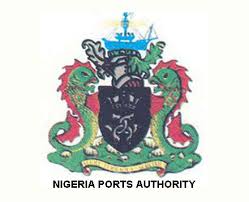The Nigerian Ports Authority (NPA) has said that it was awaiting the consultant’s report on the feasibility and viability of linking the Tincan Island Ports to the rail tracks for the easy evacuation of cargoes from the ports.
The Managing Director of NPA, Mallam Habib Abdullahi who made this known at a parley with journalists in Lagos recently also disclosed that the authority had done a lot in tidying up the rail tracks within the ports of Lagos and Port-Harcourt where there were existing rail routes adding that very soon, the management would be undertaking inspection of those rail tracks to enable the public know exactly what the NPA had done in that area.
Abdullahi who was represented at the parley by the General Manager Public Affairs of NPA, Captain Iheanacho Ebubeogu stated that the inspection was necessary as it was expected that in order to help decongest the roads, there was the need to get the rail working to complement the roads so that the traffic dilemma witnessed in Lagos and Port-Harcourt would be reduced.
“For the other ports like Tincan, there is consultancy to look at the possibility of linking it with the rail and as soon as that report comes out, we will be able to know exactly if it is feasible and also viable because we will appreciate that to link Tincan with Apapa will traverse through build up areas of the city and to do that will come with its huge attendant cost.
“So, a comparative analysis in that regard will determine what we do in due course. We are still waiting for the consultant’s report”, he said.
He recounted that the rehabilitation of the old terminals in Warri ports were all completed adding that the 1.6 kilometre road in Apapa was also completed even as he said that the management was considering putting some bumps on the road as well as do a notice on speed limit as according to him, “you will appreciate that when people see a good road, they forget that it has its own attendant danger too”.
The NPA boss maintained that the ongoing work at Lekki Deep Seaport and the Ibom Ports would continue to thrive saying that there were many reasons that the authority had to continue to work on those ports.
According to him,” there are two factors that drive the port system, one is change in transport demand and the other is development in technology. Over the last decades, ships are getting bigger because the ship owners want to respond to the economy of scale. Bigger ships means that you need wider channels, deeper channels to accommodate the draughting which they are going to arrive your ports with and for some of these ships, our ports that were built in the 70s may not be able to accommodate them because they were designed in response to the demands of those time, it is not the demand of today and that is why I have told you that change in transport demand is a very serious factor that determine the type of development that you give to a port.
“The other factor we have to do is the development in technology, it is also what we are looking into in our monitoring and compliance duty. We oversee the terminal operators to ensure that they use the appropriate cargo handling gears and their billing system is not cumbersome and for those ports we are building, we will bring to bear all these areas that require us to stick to transport demands as well as development in thechnology”.
Send your news, press releases/articles to info@primetimereporters.com. Also, follow us on Twitter @reportersinfo and on Facebook at facebook.com/primetimereporters or call the editor on 07030661526.

